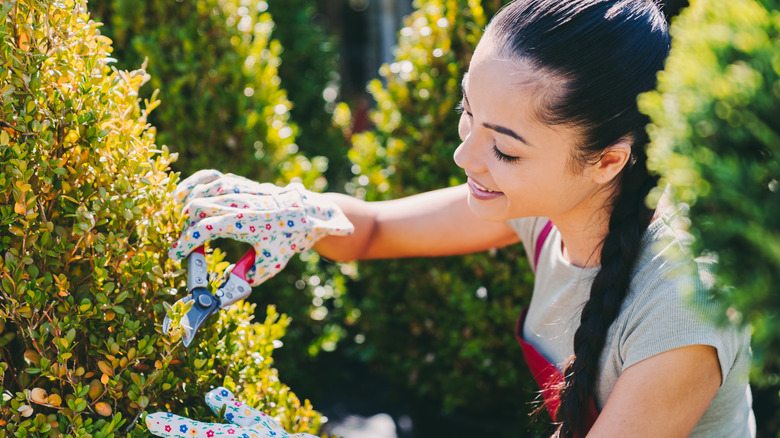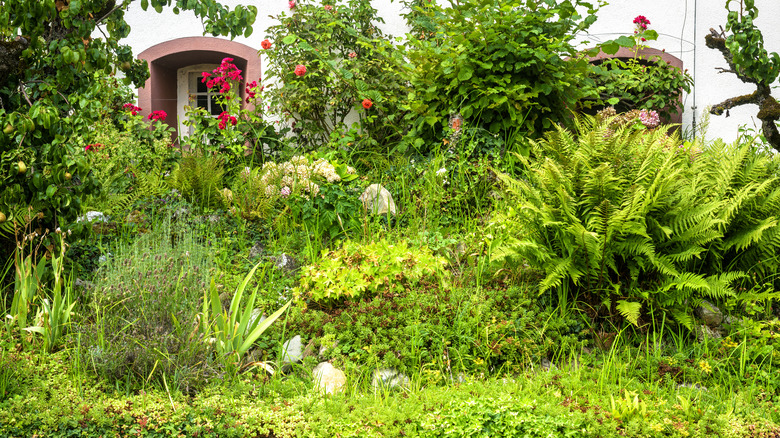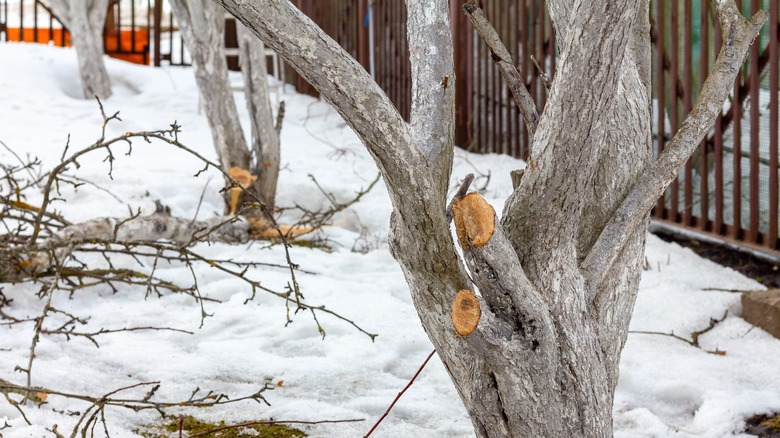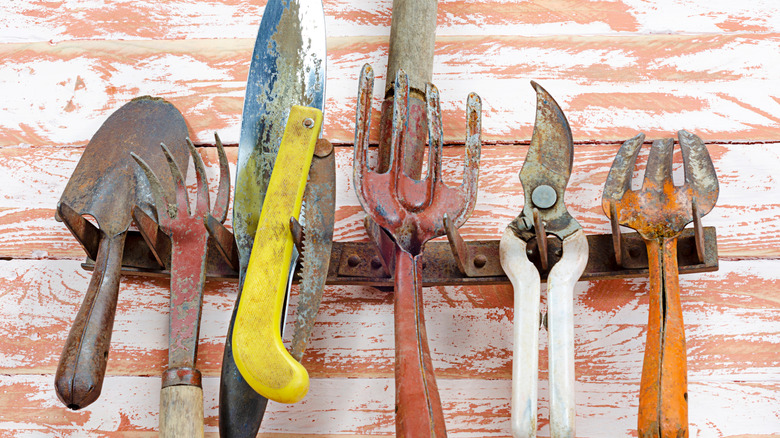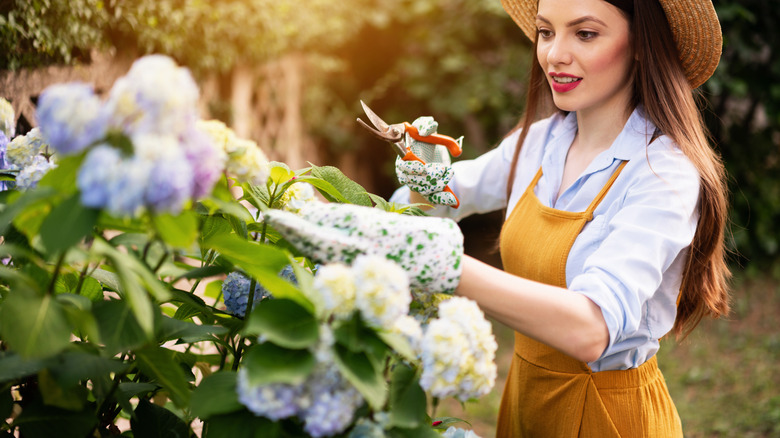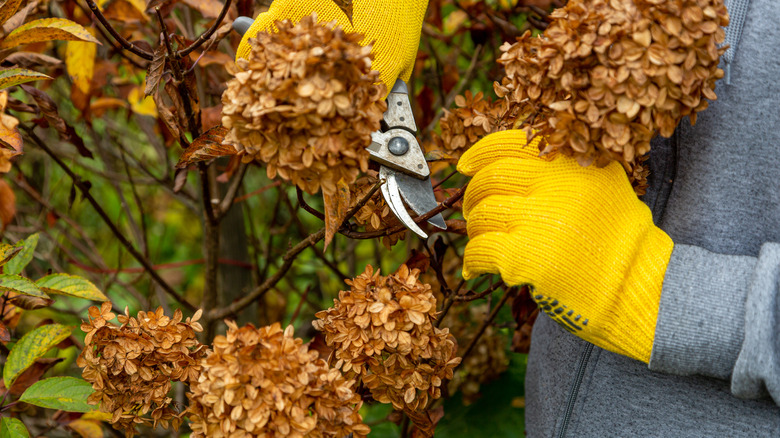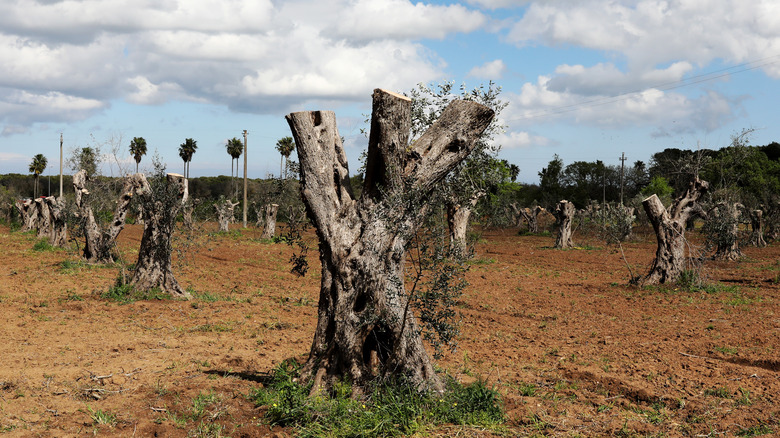Mistakes To Avoid While Pruning Your Plants
Whether you have a yard full of fruit trees or a row of flowering shrubs lining the edge of your porch, most of the species found in your landscape will require some level of pruning throughout the year. Pruning is not the easiest part of caring for plants but it's definitely a task most gardeners can handle, as long as you understand what you're doing and avoid some of the common and detrimental mistakes. It's also important to have the right tool for each job and to keep that equipment clean.
Pruning willy-nilly without a cohesive plan in mind can be dangerous for a couple of reasons. You may unintentionally make cuts in the wrong places, which can result in damage and disease or lopsided shrubs. The lack of a plan can easily lead to a major cut that you instantly regret, or you may end up repeating tiny trims that don't ultimately do much of anything to help the plant. Before tending to this important gardening task, let's review the most common mistakes to avoid.
Why it's important to prune
Why prune? Orchard pruning for fruit trees and berry bushes is a vital part of keeping those plants healthy and encouraging fruit production. For landscape shrubs and smaller plants, the practice keeps them healthy as well and it allows you to shape them for an aesthetically pleasing layout. So one part of your pruning plan should be focused on what each plant needs, and the other part can be focused on what you're trying to accomplish in your overall design.
When you're coming from the perspective of rewilding your yard and embracing the latest ungardening trends, keep in mind that even though these are climate-conscious movements inspired by nature, there's still a line that will result in an unsightly mess when crossed. Refraining from ever pruning is a guaranteed way to let your landscape shrubs grow out of control. Consider too that many common issues with plants can be resolved by removing dead or decaying leaves. Just because one part of the plant has been infected doesn't mean the entire thing is at risk. Provided you take care of the problem as soon as you're aware of it, pruning one sick or infested plant will help keep those around it safe.
Making stub cuts
When pruning your trees and shrubs, you want to avoid creating stub cuts. These are cuts that are made too far away from the trunk and that leave delicate internal branch tissue exposed to the elements. Imagine yourself struggling with a wound that your body isn't able to close and you'll quickly understand why this predicament is bad for a tree or shrub. As the damaged tissue decays, it allows diseases to make their way into the trunk and wreak havoc on the overall health of the plant.
They are also problematic for taller plants, like trees or large shrubs, since they create unpredictable shoots. Any limbs that shoot out from below those cuts will have a weaker connection to the main trunk. Over time they will continue to grow larger and heavier, at which point they become a hazard since they're likely to detach and fall.
Using dirty, rusty, or dull equipment
Within the process of maintaining your plants lies the process of maintaining your pruning equipment. This really should be obvious — we know it's important to do our best not to step on rusty nails when walking around barefoot, after all. Yet, sometimes we just grab whatever's lying around in the shed and get to work without a second thought. Well, you can figure out where this is going: Rusted equipment is not good for our trees, vines, or flowering bushes, just like rusty nails are not good for our feet. The uneven surfaces of the rust on cutting shears can capture and hold onto bacteria; when you use the shears to prune a plant you open a wound that the bacteria can then enter. The same holds true for dirty equipment so keep everything clean and sanitized.
From there, make sure your blades are sufficiently sharp. Dull cutting blades make it impossible to get a clean cut the first time. Hacking away at tree limbs or plant stems makes for jagged cuts and crushed stem tissue from which the plant will have trouble healing.
Pruning at the wrong time of year
Just as some seedlings should be started in the winter and others later in spring, different plants require different pruning schedules. Opting to prune a shrub at the wrong time could result in a loss of flowers for the next season. For a fruit tree, it could prohibit fruit production. And the list goes on. Therefore, it's important to get to know your plants on an individual basis and learn the best time of year to take care of each one. Most deciduous trees get pruned in February and March, but did you know that oaks should be tended in December or January? Even within the same species, hydrangeas for example, different varieties have different requirements.
It can quickly get confusing but it doesn't have to. Investing the time to do research and consulting your local nursery professionals or extension agents is all it takes to stay on track. If you have a landscape covered in all kinds of interesting flora, you'll do well to draw up a schedule. On the other hand, if the idea of conflicting pruning schedules puts you off the idea of having any plants at all, just stick to something like a rose garden which will provide you with beautiful scents and sights from plants that all have similar needs.
Pruning in extreme temperatures
Winter is tough on a lot of us and that goes for our plant friends in the garden as well. Of course, some trees like apples and pears were born to be pruned during the depths of the coldest winters when they are dormant, but that's not the case for everything outside. If you take a peek in the backyard and notice frost-damaged foliage, it's often best to wait until temperatures warm up to tend to them. When you make a cut and expose that interior tissue, you invariably affect the plant's ability to tolerate cold. It's more important to keep them at their maximum cold tolerance, or hardiness, than it is to immediately remove the decay. Bacteria and fungi can often survive a winter, but they do so in a dormant state, meaning they're less of a problem.
It's also better to refrain from pruning during a heat wave. Your cool temp and moisture-loving plants may already be stressed out and dehydrated. Pruning them will reduce their moisture reserves further and make the situation even worse. Generally speaking, summer pruning is right for many plants and shrubs, but when it's excessively hot outside it's best to take a break and sit on the covered porch with a cold glass of lemonade instead.
Tree topping
When trees are topped it means their canopy is cut off or a good-sized portion of the trunk and primary branches is removed. If you live in a tropical area prone to bad storms, you'll hear tree topping referred to as a hurricane cut usually applied to palm trees. Elsewhere you may hear it called heading, tipping, or rounding over. Either way, it's a bad habit to get into. First of all, trees rely on their leaves to perform photosynthesis to turn sunlight into food energy. If they lose the majority of their canopy, this food source is reduced drastically, which can lead to starvation. Secondly, once a tree has been topped it may have too many large wounds at the sites of the cuts to heal. The resulting decay is an invitation to all the insect pests, fungi, and bacteria in the vicinity to move right in and get comfortable.
Tree topping also sets up a tree for future failure as it tries to regain its strength. The extreme damage will send it into hormonal overdrive which causes it to grow new branches as quickly as possible in a desperate attempt to recover. This new growth will be inferior in strength and susceptible to breakage.
